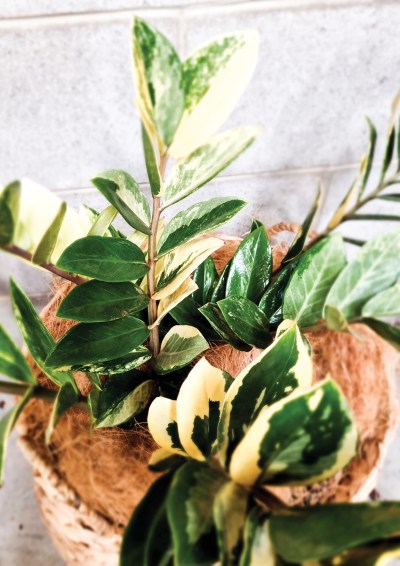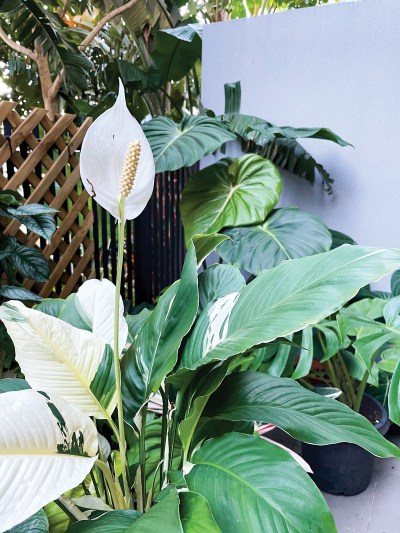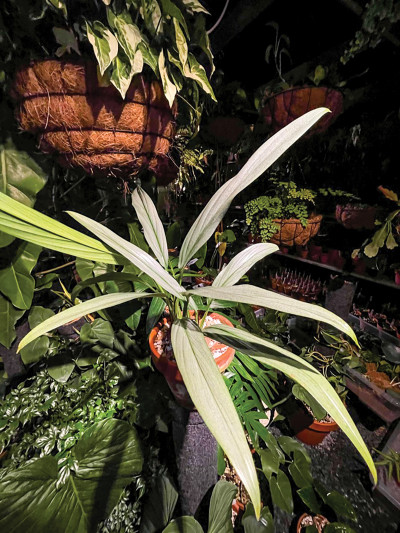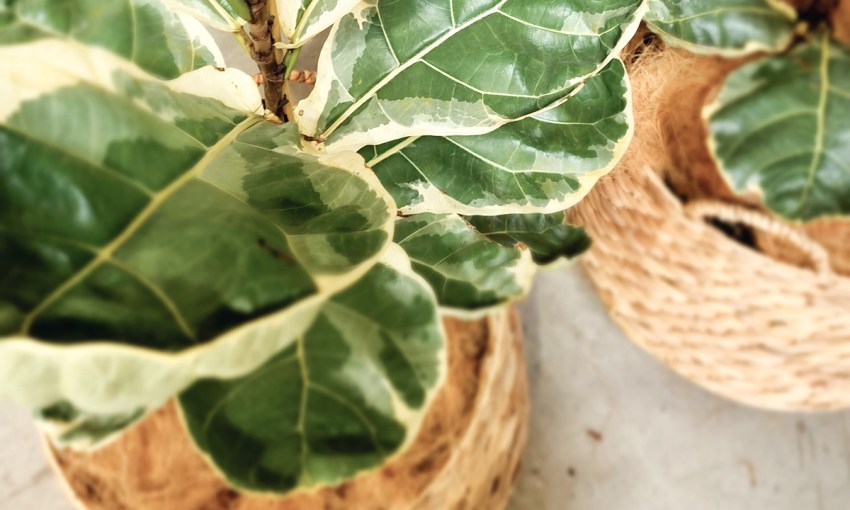If you're obsessed with indoor plants and looking for that next special specimen for your collection, why not try one of these hard-to-find variegated beauties?
Have you got plant envy?
As our indoor love of plants continues to evolve, diehard collectors are always on the hunt for something bigger, better and more exciting.
It seems every time we blink, a new variety of plant appears. Monsteras have progressed from plain green to variegated, philodendrons from yellow to pink to white and now, two of our most popular indoor plants, the fiddle leaf fig (Ficus lyrata) and Zanzibar gem (Zamioculcas zamiifolia) have just upped their game.
Variegated Ficus lyrata
Up until recently, the only growers of these beauties were located in Asia, but they’re now available in Australia. Instead of the large green glossy leaves you would be familiar with, the variegated fiddle leaf has cream to white colourings on the outer edges of the leaves making them truly stunning and individual.
If you are already a fiddle leaf lover and think you have the care needs of these plants down pat, keep in mind these will be slightly more temperamental and may require a bit of extra TLC. However, the rewards of having this hybrid in your collection will be worthy of bragging rights.
As gorgeous as variegation is on plants, please keep in mind that it is in fact a mutation that causes plants to produce less chlorophyll. The mutation is responsible for the beautiful variegation of creams and whites but also reduces photosynthesis, making the remaining green parts work that little bit harder to support the colourings we admire so much.
Taking care of your variegated fiddle leaf fig
Keep it in bright indirect light to help with the photosynthesis, but never in direct light as this can cause the leaves, in particular white sections, to burn. Rotation of the plant every couple of weeks is also advised for nice even all-round growth.
Be consistent with watering; the variegated variety won’t recover as quickly from under-watering, over-watering or root disturbances.
Keep leaves free from dust. Wipe them down regularly with a clean, damp cloth to allow the leaves to breathe.
The variegated ficus probably won’t grow as quickly as the standard green, but a little liquid fertiliser regularly will go a long way to strengthening roots and stems, and supporting leaf formation.
Allow it to dry out between waterings, but ensure you water to complete saturation when you do water.
Tiny brown spots on leaves can be a sign of over-watering, take this as a sign to assess your watering patterns and cut back on the love for a while.
Dropping leaves usually indicates shock, often resulting from things such as repotting, dehydration or relocation of the plants. Use a dilution of a plant health tonic over both leaves and soil.
Yellowing of leaves is most likely caused by over or under watering, moisture meters are a handy tool to have when owning a variegated fiddle, however I still believe in the old fashioned way of testing with your finger.

Variegated Zamioculcas zamiifolia
We have the classic green Zanzibar, the curly leaf zenzi and the distinctive black raven ZZ, so what’s next? A variegated Zamioculcas zamiifolia should be high on your list. The ZZ is a crowd favourite, being a perfect house plant that is low maintenance, air-purifying and an all-round easy-care option. The variegated is no different.
Being a highly sought-after plant, there aren’t many available, and it’s one I’m trying hard to add to my collection. This truly eye-catching specimen is slow-growing, but it’s also the only aroid that can be propagated by leaf cutting.
Buyer beware though: as online selling platforms have increased in popularity for plant purchasing, there are fakes on the market. A true variegated ZZ will have a pinkish stripe running the length of the stem, and shouldn’t be confused with a sick or undernourished plant with pale leaves that’s simply lost its love of life. The safest option is to buy an established plant, a complete petiole or see the mother plant when buying just a leaf.
Taking care of your variegated ZZ
While solid green varieties can withstand extremely low light, the variegated variety will need a medium indirect light source to put on its best performance. Too little and variegation can be lost.
This semi-succulent aroid needs well-draining fertile soil and to be allowed to completely dry out between waterings, so keep the watering cans well away.
If you don’t have a regular fertiliser regime, that’s just fine. Although fertiliser encourages growth if applied, it’s not necessary. Apply only during the warmer months and never when dormant over winter.
Browning on leaves with crispy edges may mean it’s time to throw on a splash of water, while mushy or yellow leaves mean you’ve given it too much. A ZZ is a pretty easy book to read and very forgiving.
Dropping leaves on a variegated ZZ is an indication of insufficient light, try a quick rotation or a new location, you don’t want to lose the colourings on this one.
Wrinkled stems are quite natural as this could simply be old stem dying. If it is the fresh new growth, it may need some water.
Curling leaves indicate too much light, the plant is attempting to shade itself and move away from the source. Relocate or add a barrier such as blinds or sheer curtains if you love the spot.
Rhizome rot is almost the only reason your ZZ may RIP. Avoid watering too regularly, they love to be dry, and avoid leaving a saucer underneath it that may collect water.

While it may take some time to search for these beautiful unicorns, there are many other not-so-rare but equally interesting plants popping up in our local nurseries, garden centres and plant shops. Perhaps try some of these to ease your cravings slightly yet still make your friends green with envy.
• Still want variegated? Try a variegated Alocasia or Picasso spathiphyllum
• Something a little special? Epipremnum amplissimum or Monstera karstenianum
• My recommendations? Ceropegia ampliata or Dischidia nummularia

This article first appeared in the Winter 2021 issue of SALIFE Gardens and Outdoor Living magazine.
including free delivery to your door.



